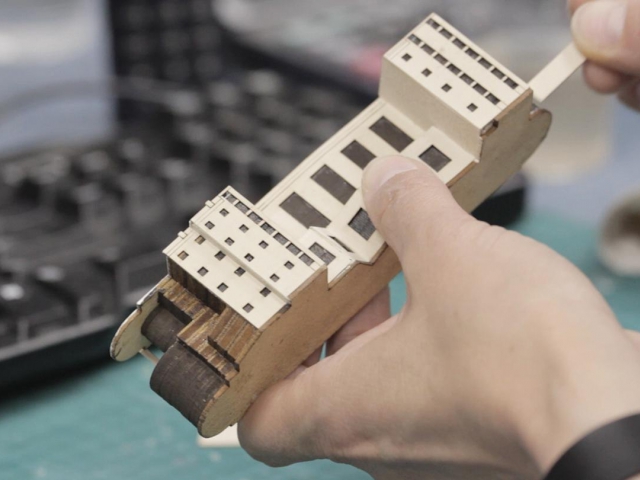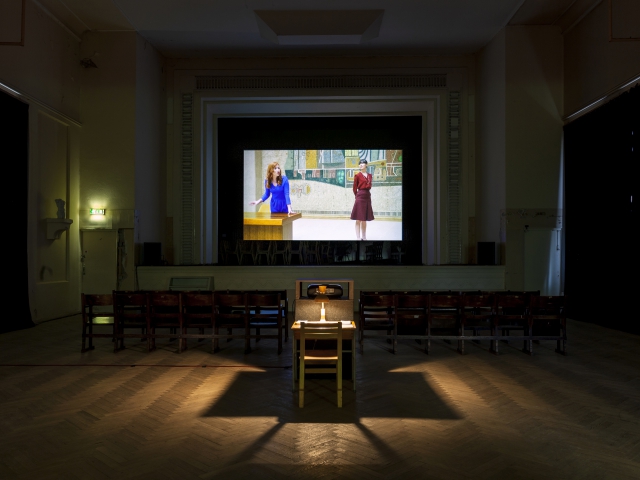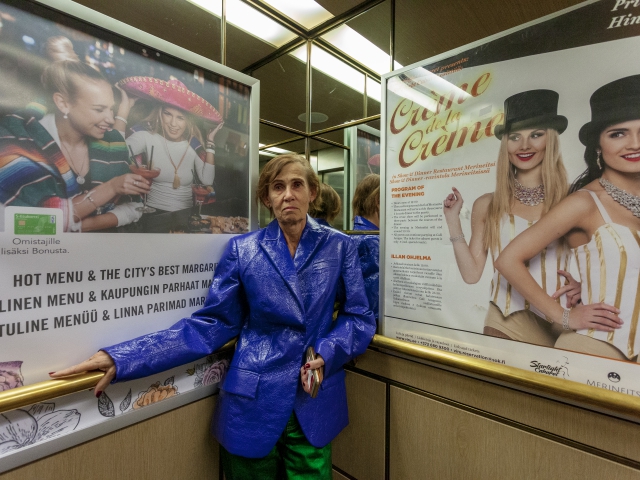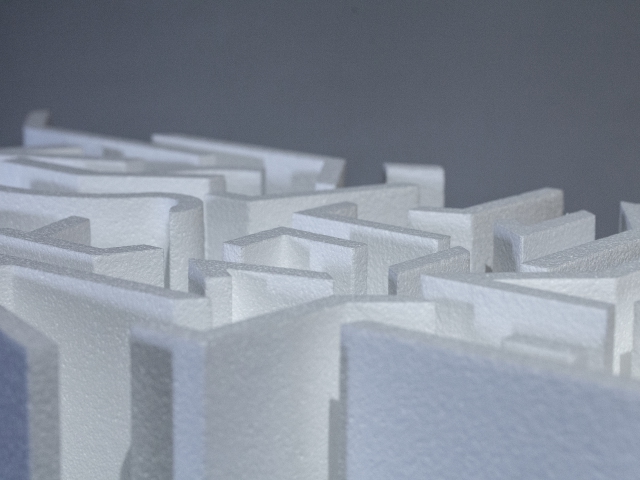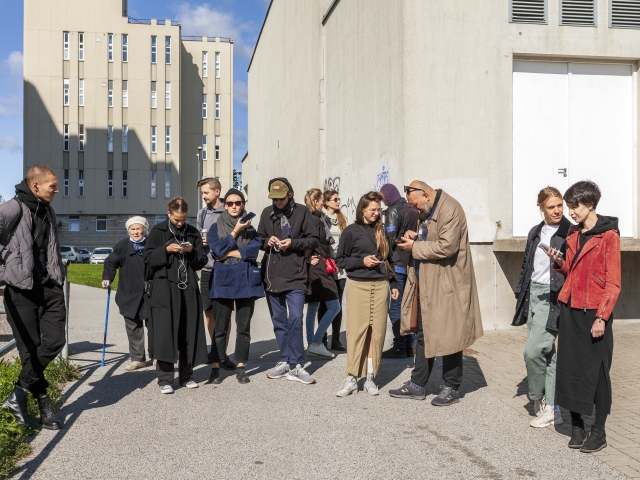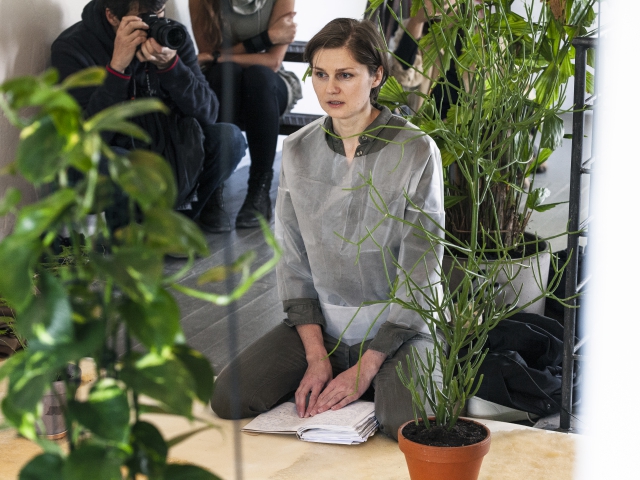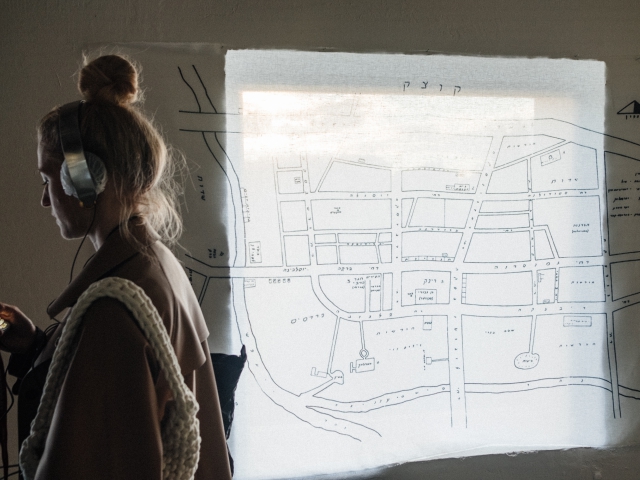INTENSIVE PLACES. Main exhibition of 6th Tallinn Photomonth biennial
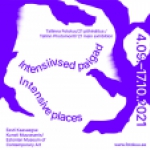
INTENSIVE PLACES
Main exhibition of the 6th Tallinn Photomonth biennial
Curator: Creative Association of Curators TOK / Anna Bitkina and Maria Veits
"Intensive Places", the main exhibition of the 6th Tallinn Photomonth biennial, spans across the city starting from September 3. Curated by The Creative Association of Curators TOK / Anna Bitkina and Maria Veits it is presented at the Contemporary Art Museum of Estonia (EKKM) and at four venues in different parts of Tallinn.
Having interrupted the usual order of things, the pandemic and its lasting aftermath heighten the urgency of our response to the ongoing crisis of political and social institutions and the paradigms of the future that they construct. Built upon the reproduction of economic hierarchies, structural violence and the continuing exhaustion of natural resources, they will only lead to further atrocities and exploitation unless their approach to the value of life in its different forms is reconsidered at the personal and common levels. Alongside necessary systematic transformations based on more caring and sustainable ways of governance, we clearly need to review the core societal modes of our collective being, expansion learning, sensing and dreaming. The main imperative of the exhibition “Intensive Places” is to look for multifocal answers to the question: "How can we prepare for a future based on the principles of interdependency and interspecies cohabitation?”
Looking at the idea of the common conditions in which we exist, we’d like to engage the posthumanist perspective articulated by Rosi Braidotti that might be helpful for locating our current being: ‘The proper subject of the posthuman convergence is not “Man” but a new collective subject, a “we-are-(all)-in-this-together-but-we-are-not-one-and-the-same” kind of subject’1. Landing this concept in the context of Tallinn in the framework of the 6th Tallinn Photomonth biennial, we would like to invite the exhibition participants and audiences to develop together new affirmative principles of political and environmental imagination that could also be applied beyond the region.
As a methodological kit for our research we employed the apparatus of intensive geography, a term coined by contemporary Russian philosopher and media researcher Mikhail Kurtov. Intensive geography builds upon the principles of humanitarian geography, which analyses the earth's surface through the prism of human activity, thus adding a depth and porosity that contain the processes, phenomena, experiences, and perceptions of those living on the earth2. Kurtov defines intensive places as locations (physical or notional) that can both accumulate and disperse a variety of things and forms – collect objects or artefacts and gather and assemble individuals or groups. The terms “accumulating” and “dispersing” help us simultaneously capture the diversity of physical processes on earth and the attitudes of humans to these processes. Intensive places allow us to see connections and overlapping between different layers and levels of reality, history, memory and contemporary political processes. They go far beyond common spaces of knowledge, such as a museum with an extensive collection. An ideologically-charged architectural monument repurposed due to the shift of the economic paradigm, a neighbourhood or a city constructed as a result of political occupation, an artificially created geological environment masking the aftermath of toxic corporate actions or a community trying to collectively restore their language and memory for future generations – these can all be seen as examples of intensive places.
In the process of studying the changing urban tissue of Tallinn and scanning its porous layers, we tried to overcome the prescribed time and narrative linearity and focus in the exhibition on the non-dominant knowledge and unobvious tactics of its applicability and preservation. The scope of the pillars of our research includes governmental and corporate control mediated through architecture, the use and abuse of nature through creating technological and communication infrastructures and top-down strategies intended to direct our experiences of different spaces – private, public, hybrid and unidentified – for both individual and collective bodies. We have gathered cases and methods of reclaiming history, challenging corrupt power structures, diffusing social tension and unveiling corporate processes of exploiting nature across different geographical and political contexts. Though ranging from bogs in Ireland to public spaces in Khartoum, these cases resonate with the local political and historical state of affairs. They also constitute a map of alternative knowledge mechanisms and practices of remembrance that presume an unlearning of the hierarchical approach to shaping living environments, reconsidering our relationship with different forms of life and helping us build a spatial literacy. By applying the notion of intensive places to the setup in Tallinn, we aim to present artistic and research practices that add to the political imaginary and focus on decoloniality in architecture, urban planning through an intersectional lens, irreversible traces of industrial heritage, and loopholes and vulnerable structures with the hidden universes between.
Consequently, the 6th Tallinn Photomonth biennial is a network of intensive places connected through 13 projects by Estonian and international artists that hold historical, emotional, contextual and architectural significance for the city’s residents and that through their operation accumulate and disperse knowledge. The main part of the exhibition “Intensive Places” is located at The Contemporary Art Museum of Estonia (EKKM), which, being a strong grassroots artistic movement, has managed to resist increasing gentrification in an area targeted by city developers and construction corporations. Embracing the building of EKKM, interconnected works by different artists compose a dense combination of urban and natural landscapes and encounters.
The installation “Gathering Space” by Ola Hassanain proposes that public space can be an alternative political form of collective existence in the city and demonstrates different trajectories that challenge the predictability of built environments. In the video work “City’s Craftswoman” describing a regular day in the life of an employee of the municipality of Jerusalem, Tali Keren points to the layered ideological mechanisms of nation-building in Israel and how they are used as tools for occupation and territorial expansion. The sound sculpture “Tabula” by Alexander Morozov embraces the architectural history and contemporary intensity of EKKM. By reflecting on the politics of music and the history and traditions of the “Estonia” piano factory located in the Tallinn region, he connects its piano strings and elements with flows of electrical current, thus generating a new audio experience of the building. Natalia Tselyuba and Yulia Appen present a personal video story “My Cosmos”, which is both a dormant neighbourhood of pre-fabricated housing in Zaporizhzhia, Ukraine, and a self-sufficient universe of complex feelings affected by patterns of Soviet mass housing architecture incorporated into the bodily experience of those who grew up in the city periphery. Poetic audio walks created by Anna Kaarma aim to guide audiences through Lasnamäe, the part of Tallinn with the largest Russian-speaking community in Estonia. As an entry point into this enclave of late Soviet Estonian architecture, she uses artist studios built on the last floors of residential buildings as controversial loopholes of the city planning of the time that were both examples of the state's ideological agenda and people’s spaces for free self-expression.
In her drone-shot video “Hollow” Tanja Engelberts depicts the consequences of misused space and intoxicated nature that remain long after our existence by unveiling the contemporary camouflage techniques of states and corporations to cover the continuous industrial damage they create. Gareth Kennedy exhibits a series of research panels from “Time Rite” (2019–2044), a sustained engagement with an area of blanket bog on the Atlantic Ocean in County Mayo, Ireland, and a 4,300-year-old bog pine. The project is a large-scale archaeological experiment aimed at reducing social tension in the situation of continuous ecological, social and cultural instability. In the sculptural and audio installation “How to Move Like a Slime Mould” Laura Kuusk emphasises invisible processes of other-than-human organisms, namely, of slime mould, a common name given to about 900 different often single-cell organisms. Throughout the exhibition the artist will appear on site to activate the installation and instruct audiences how to experience the “slime mould mode”. Roven Jõekäär, who is preoccupied with “queer-archaeology”, presents a recent and ongoing project “Queer Kalevipoeg” that portrays themes of lost queer history and folklore in a format of different pieces of wearable and usable merchandise. Turning to strategies for the non-formal preservation of history, Natalia Romik explores the layers of (non)memory in relation to Jewish architectural presence in Europe through collecting archival materials and rebuilding social and emotional connections between the territories of former Jewish shtetls in Poland and their current residents. Her project “Nomadic Shtetl Archive” is an attempt to decolonise and reconstruct erased parts of European history.
Besides an audio walk to Lasnamäe, there are also three other off-site locations. In the former socialist building of Viru Hotel (now Sokos), known for housing a radio centre for the Soviet secret service (KGB) spying on its guests until as recently as 1991, there is a sound installation “Inn of the Accord” by Madlen Hirtentreu. The work creates alternative optics for experiencing the architecture, infrastructure and atmosphere of the hotel building in order to materialise fragments of political and emotional history. The National Library of Estonia hosts a two-channel video “Muse'' by Terike Haapoja. Recorded and edited during the first year of the Covid pandemic, the work consists of dialogues with her friends, family and significant others about the relationship between art and love, eternity, the more-than-human world and activism. Based on extensive research into speeches by politicians and famous political texts about the ideological role of architecture, Jasmina Cibic’s video work “Tear Down and Rebuild” investigates how art and architecture can serve as soft power strategies of political order and propagate current state values. During the exhibition, the work will be merged into the context of a former folk house in Kopli built before WW2, which is now a community centre stimulating local creative and eco-initiatives.
Creating links between the pores of the city and the works by participating artists, the exhibition itself turns into an intensive place – a power place, where processes begin and where they are retained, where experiences become connected and from where they diffuse onto other contexts, where previously unrelated actions and ideas gather and develop into new concepts that help us generate more responsible modes of existence and knowledge.



